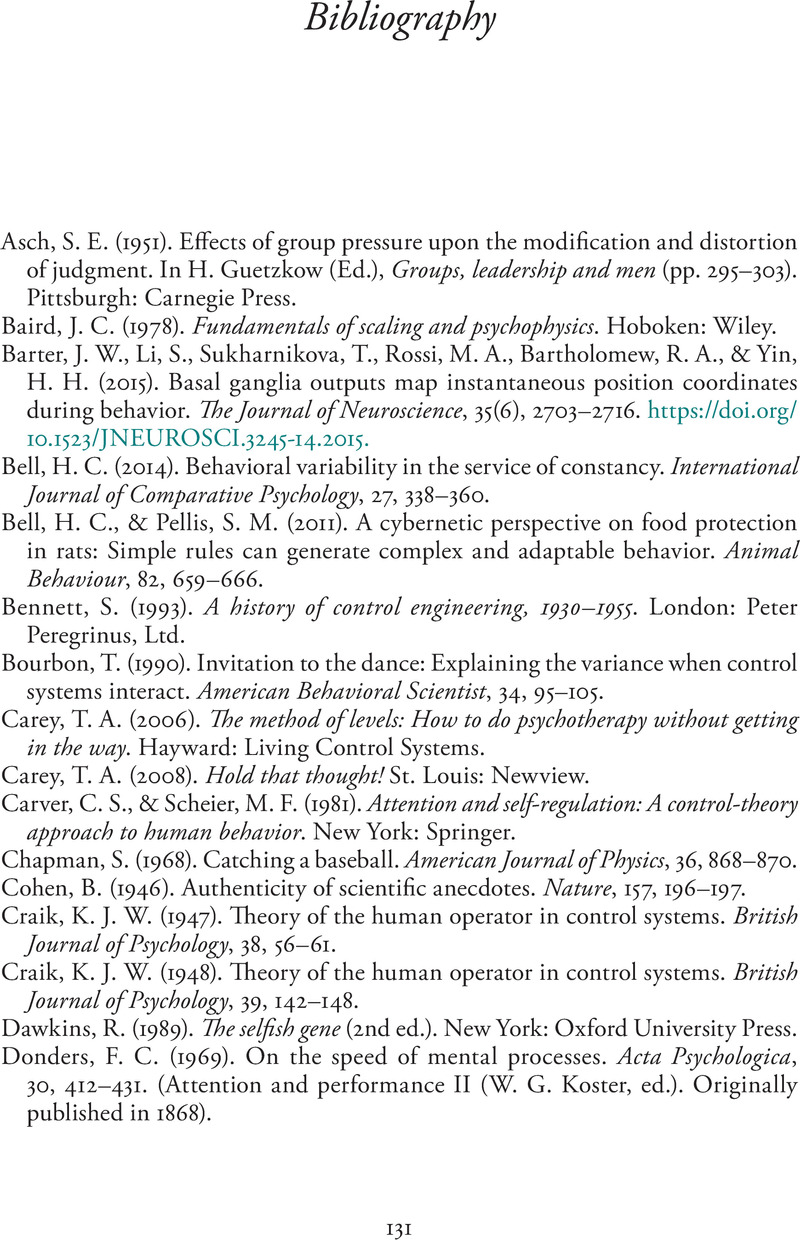Book contents
- The Study of Living Control Systems
- Endorsements for Living Control Systems
- The Study of Living Control Systems
- Copyright page
- Contents
- Figures
- Tables
- Preface
- 1 Living Control Systems
- 2 Doing Research on Purpose
- 3 Getting Started
- 4 Basic Research on Purpose
- 5 Exploring the Hierarchy
- 6 Learning
- 7 Social Control
- 8 Back to the Future (of PCT Research)
- Bibliography
- Index
- References
Bibliography
Published online by Cambridge University Press: 02 February 2021
- The Study of Living Control Systems
- Endorsements for Living Control Systems
- The Study of Living Control Systems
- Copyright page
- Contents
- Figures
- Tables
- Preface
- 1 Living Control Systems
- 2 Doing Research on Purpose
- 3 Getting Started
- 4 Basic Research on Purpose
- 5 Exploring the Hierarchy
- 6 Learning
- 7 Social Control
- 8 Back to the Future (of PCT Research)
- Bibliography
- Index
- References
Summary

- Type
- Chapter
- Information
- The Study of Living Control SystemsA Guide to Doing Research on Purpose, pp. 131 - 136Publisher: Cambridge University PressPrint publication year: 2021



